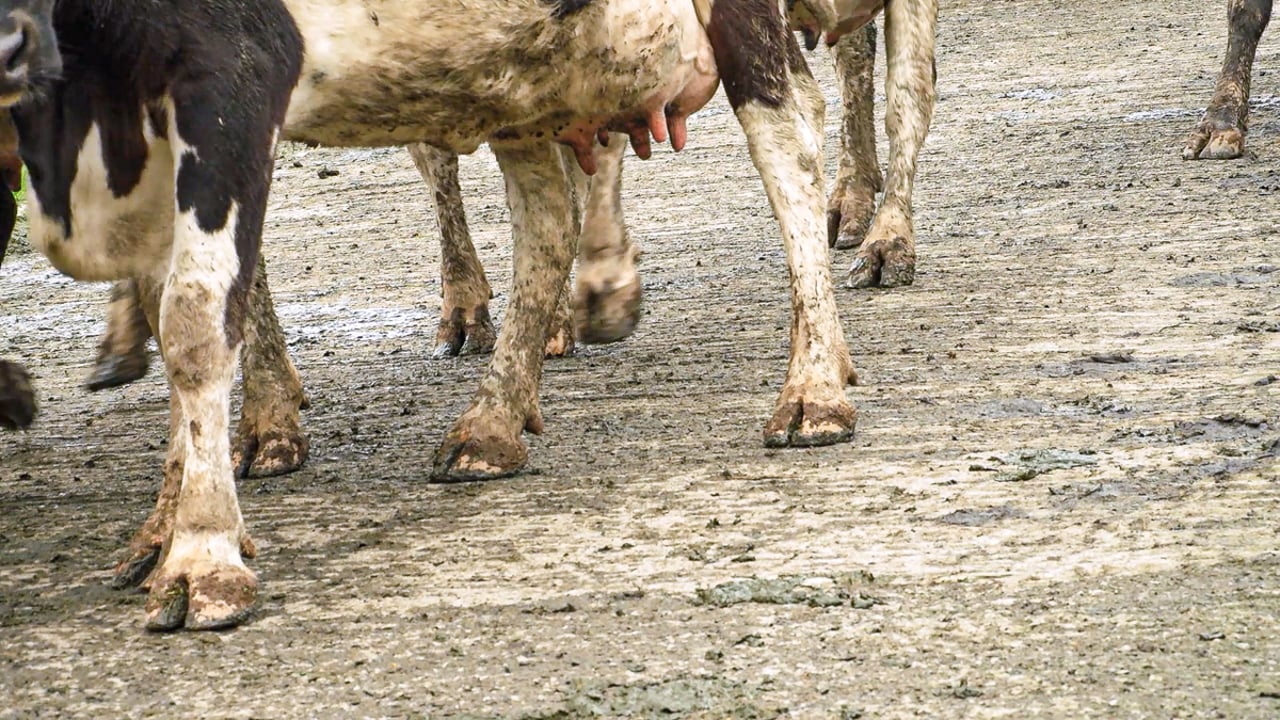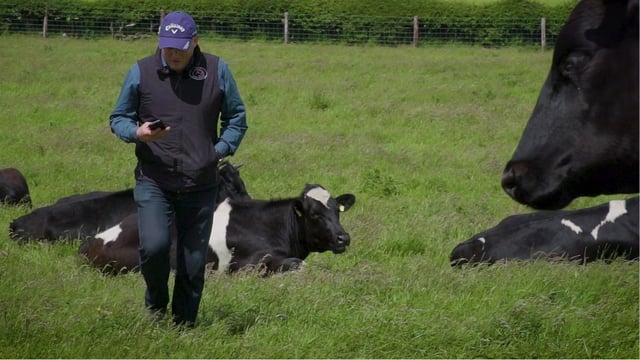Preventing mortellaro during the housing season
Digital dermatitis, or mortellaro as it is commonly known on farms, can be a serious issue at this time of the year as the bacteria easily spreads in slurry.
Mortellaro is an infectious disease that affects the skin close to the hoof, presenting as lameness in the cow as the skin erodes.
It is caused primarily by the spirochaete bacteria of the Treponema species and often becomes more prevalent when cows are housed in unhygienic conditions.
The contagious disease is often introduced into the herd through bought-in animals who are already infected.
The disease can then quickly become rampant during housing as conditions deteriorate.
According to Animal Health Ireland (AHI), each case in 2024 was estimated to cost an average of €201, therefore minimising cases is crucial.
Mortellaro
Mortellaro can be quite a stubborn hoof disease, with a reputation for being hard to control and almost impossible to eradicate from the farm.
Most farmers keep an eye out for mortellaro by watching for lesions.
It usually presents itself as a lesion on the claw skin of the hoof, located between where the claws merge.
The disease will appear as a red and quite raw-looking lesion that is very painful and will often have quite a bad smell.
However, it can take up to four month before lesions develop, meaning the disease will most likely have spread throughout the herd in the meantime.
The environment is crucial in the controlling of mortellaro, so farmers must ensure that the cubicle shed floor and passageways are regularly scraped.
Cows that have previously suffered from metabolic disorders like milk fever, displaced abomasum, and ketosis have a higher risk of mortellaro disease.
Treatment
Some farmers still treat mortellaro lesions with antibiotic sprays, however, vets have previously advised against this treatment method as the bacteria may enter the animals' hair and effectively make her a carrier animal.
Instead, farmers should be trimming the herd hooves using the Dutch five-step method to rule out other claw lesions, and to remove excess horn in order to enhance treatment penetration.
The trimming protocol should be discussed with your hoof trimmer.
It might be worth analysing and examining the whole herd with your hoof trimmer to see which cows need a trim after drying off and coming into the winter months.
Regular foot bathing is a key strategy in preventing and controlling mortellaro, with copper sulphate products often the the most effective way of controlling mortellaro in your herd.
Prior to foot bathing, try to first remove manure or dried bedding material and dry out the lesion, in order to maximise the effectiveness of the product.
Salicylic acid can also be effective at controlling mortellaro as it has a low pH, which makes it a bactericide.
It comes in a powder that can be placed directly on the lesion, using a bandage to keep it in place for a number of days.
Ensure that cows are not overcrowded in the house and that there is at least one cubicle/cow, so that cows maximise their lying time of 12-14 hours/day, as the more they are off their feet, the better.
Locomotion scoring or mobility scoring should be carried out to determine which cows are struggling on their feet and to dictate which hoof needs work.
The most important thing to keep mortellaro at bay, is to keep high hygiene standards at all time by making sure passageways are spotless and cubicles and mats are comfortable and clean.






